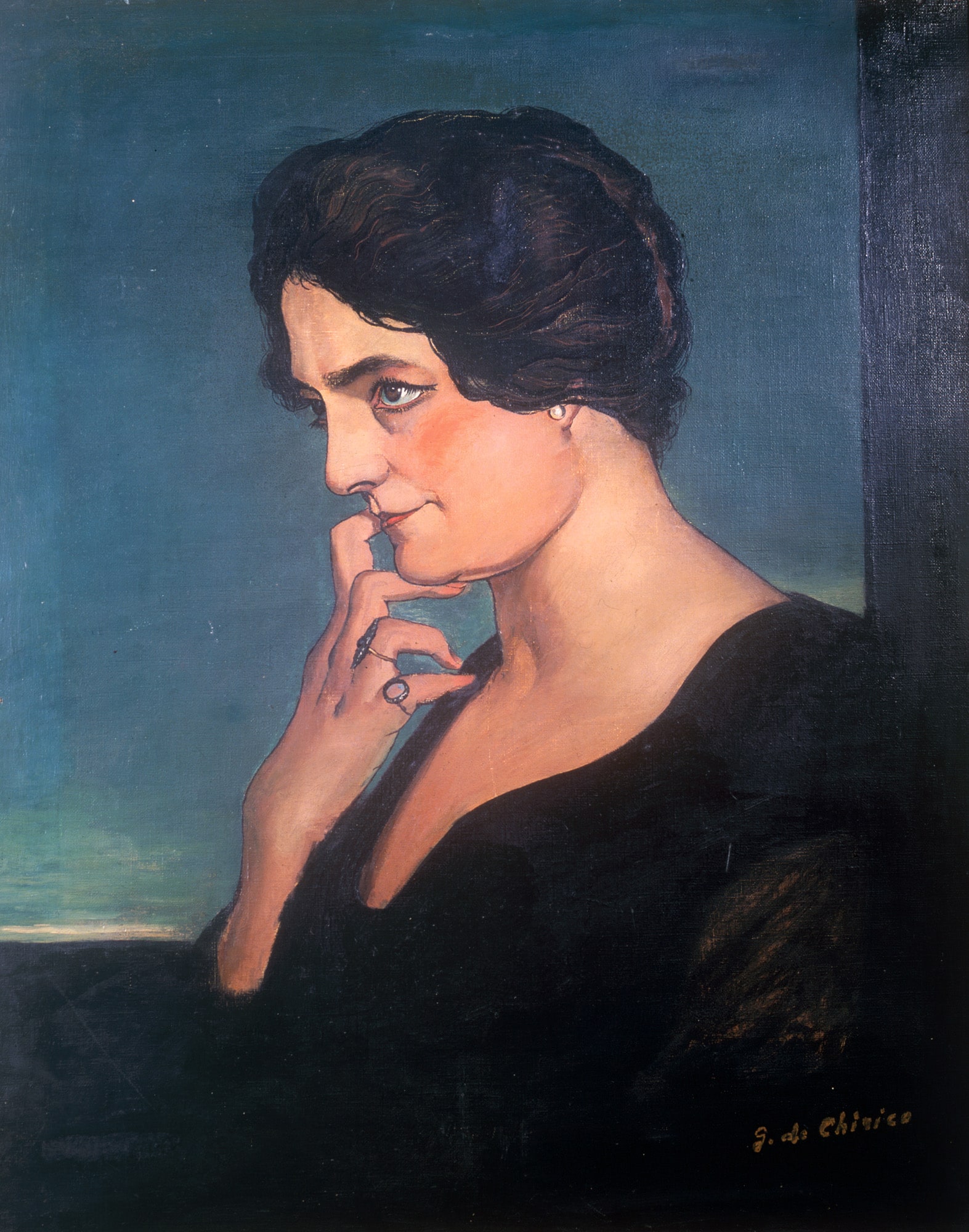18 March 2016
 Portrait of Madame L. Gartzen 1913,
Portrait of Madame L. Gartzen 1913,
Oil on canvas, 72,5 x 60 cm.
Private Collection, Roma The year 1910 marked not only a turning point in de Chirico’s career but also in the history of art. Following several months living in Florence, the artist experienced his first metaphysical revelation before the dominating statue of Dante and the Basilica of Santa Croce in Piazza Santa Croce. It provided him with “the strange impression that I was seeing everything for the first time. Influenced by 19th century philosophical thought, particularly by Nietzsche, Schopenhauer and Weininger, de Chirico spent the ensuing eight years in Florence (1910-1911), Paris (1911-1915) and Ferrara (1915-1918) lending tangible form to his unique understanding of metaphysics through enigmatic works of his immediate surroundings and everyday objects that harbour an inherent sense of discovery and revelation. His early metaphysical corpus includes eerily empty Italian piazzas with long shadows inhabited by a solitary statue of Ariadne or that of a politician, disquieting faceless mannequins, and claustrophobic interiors filled with random juxtapositions of geometric instruments, maps, bizarre objects and the motif of paintings within paintings.
Highlighting his various periods with examples from his earliest works to last ones, Giorgio de Chirico: The Enigma of the World exhibition took place at the Pera Museum between 24 February - 08 May 2016.

Pera Museum presents an exhibition of French artist Félix Ziem, one of the most original landscape painters of the 19th century. The exhibition Wanderer on the Sea of Light presents Ziem as an artist who left his mark on 19th century painting and who is mostly known for his paintings of Istanbul and Venice, where the city and the sea are intertwined. Through the exhibition, we will be sharing detailed information about the artist and the artworks.
Tuesday - Saturday 10:00 - 19:00
Friday 10:00 - 22:00
Sunday 12:00 - 18:00
The museum is closed on Mondays.
On Wednesdays, the students can
visit the museum free of admission.
Full ticket: 300 TL
Discounted: 150 TL
Groups: 200 TL (minimum 10 people)